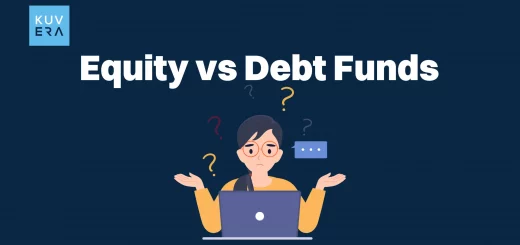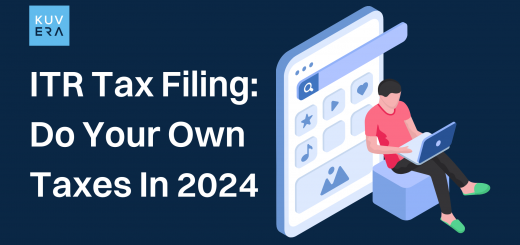Income tax is applicable on any income earned in India. The taxation rules applicable for different taxpayer categories like domestic companies, partnership firms, HUFs (Hindu Undivided Family), and individuals are not identical. In the case of individuals and HUFs, tax is levied based on the applicable income tax slab.
Under this system, individual taxpayers have to pay taxes as per their income. While people with income below the minimum exemption limit don’t need to pay taxes, those in higher income brackets must pay more taxes.
The following sections will cover everything you want to know about the new income tax slab rates.
What Are the Income Tax Slab Rates?
In India, income tax is charged at different rates for firms, companies, individuals, and HUFs. While companies and firms have fixed rates based on their profits/turnover, individuals, HUFs, BOI (body of individuals), and AOP (association of persons) are taxed based on their annual income. Their earnings are grouped into tax brackets (slabs), with different tax rates for each slab.
The Income Tax Department announces the new income tax slabs for individuals. The tax rates increase if your taxable income goes above the tax brackets. If it is below Rs. 2,50,000 in a financial year, you have no tax liability. The aim of this system is to ensure fair and progressive taxation in the country.
There are three categories of individual taxpayers with different tax slab rates. These are as follows:
- Individuals aged less than 60 years (both residents and non-residents)
- Senior citizens (resident individuals aged 60 years or above)
- Super senior citizens (resident individuals aged 80 years or above)
Old and New Income Tax Slab Rates for FY 2021-22 (AY 2022-23)
The following are the income tax slab rates under the old (existing) regime:
- For individuals, HUFs, AOP and BOI
| Taxable Income Range | Income Tax Rate |
| Up to Rs. 2,50,000 | Nil |
| Rs. 2,50,000 to Rs. 5,00,000 | 5% |
| Rs. 5,00,000 to Rs. 10,00,000 | 20% |
| More than Rs. 10,00,000 | 30% |
- Income Tax Slab for Senior Citizens
| Taxable Income Range | Income Tax Rate |
| Up to Rs. 3,00,000 | Nil |
| Rs. 3,00,000 to Rs. 5,00,000 | 5% |
| Rs. 5,00,000 to Rs. 10,00,000 | 20% |
| More than Rs. 10,00,000 | 30% |
- For super senior citizens
| Taxable Income Range | Income Tax Rate |
| Up to Rs. 5,00,000 | Nil |
| Rs. 5,00,000 to Rs. 10,00,000 | 20% |
| More than Rs. 10,00,000 | 30% |
The following are the tax rates under the new income tax regime for individuals and HUFs:
| Taxable Income Range | Income Tax Rate |
| Up to Rs. 2,50,000 | Nil |
| Rs. 2,50,001 to Rs. 5,00,000 | 5% |
| Rs. 5,00,001 to Rs. 7,50,000 | 10% |
| Rs. 7,50,001 to Rs. 10,00,000 | 15% |
| Rs. 10,00,001 to Rs. 12,50,000 | 20% |
| Rs. 12,50,001 to Rs. 15,00,000 | 25% |
| More than Rs. 15,00,000 | 30% |
Tax Rates for Domestic Companies
The following are the new income tax slab rates applicable for domestic companies in AY 2022-23.
| Particulars | Tax Rate |
| Total turnover/gross receipts not exceeding Rs. 400 crore in FY2018-19 | Nil |
| Total turnover/gross receipts in FY2019-20 not exceeding Rs. 400 crore | 25% |
| For any other domestic company | 30% |
| If the domestic company opted for Section 115BA | 25% |
| If the domestic company opted for Section 115BAA | 22% |
| If the domestic company opted for Section 115BAB | 15% |
Any domestic company that has opted for special taxation under Section 115BAA and Section 115BAB will be exempt from MAT (Minimum Alternate Tax). This facility is not available for a domestic company that opted for Section 115BA.
In any other case, a domestic company must pay taxes of at least 15% of its book profits as per Section 115JB. However, a company under the International Financial Services Centre earning its income only via convertible foreign exchange can pay MAT at a 9% rate.
Tax Rates for Other Tax-paying Entities
The following are the income tax rates for other taxpayers:
-
Foreign companies
A 40% rate is applicable for all foreign companies on their income received or accrued in India. However, if a company receives royalties or technical fees under a Central Government-approved agreement made between 1964 and 1976, the taxation rate will be 50%.
Surcharge and health and education cess are also added to the income tax amount.
-
Cooperative societies
There are certain tax exemptions available for cooperatives under the ‘Principle of Mutuality’. However, earnings from interests, non-members, and rental income are subject to income tax at the following rates.
| Taxable Income | Tax Rates |
| Up to Rs. 10,000 | 10% |
| Rs. 10,000 to Rs. 20,000 | 20% |
| More than Rs. 20,000 | 30% |
The Finance Act of 2020 added the option for new taxation under Section 115BAD. Under this, cooperative societies could get taxed at 22% with a 10% surcharge and 4% cess applicable. Under Section 115JC, cooperative societies pay Alternate Minimum Tax (AMT) at a rate of 18.5%.
-
Partnership firms
All partnership firms, including LLPs (Limited Liability Partnerships), have to pay 30% tax for AY 2022-23. Surcharge and health and education cess will also get added to the income tax payable at applicable rates.
-
Local authorities
Local authorities are taxable at a 30% rate for AY 2022-23. A surcharge will get added to the income tax amount. Furthermore, a health and education cess will also be added to the income tax plus a surcharge.
What is the New Income Tax Regime?
In 2020, the Finance Minister introduced a new income tax regime during the Union Budget. Individuals and HUFs can opt for the new regime to take advantage of its lower tax rates. The new income tax regime is optional. So, you can choose to opt for it or continue with the old regime when filing tax returns.
You can choose to switch between the old and new tax regimes every financial year if you have income under salary or other heads of income. However, if you earn income from a business/profession, you can choose the new regime only once.
The new tax regime offers the same tax rate for all individuals regardless of their age group. However, it does not allow up to 70 income tax deductions and exemptions for calculating income tax. The exclusions include all deductions from Section 80C to Section 80U.
However, you can claim tax exemptions on allowances like HRA (House Rent Allowance) and LTA (Leave Travel Allowance) under the new tax regime. You can also claim a standard deduction of Rs. 50,000 without having to produce any proof of expenses.
Before deciding which tax regime is best, you should calculate your tax liability after all applicable deductions and exemptions. If you find out that you still save taxes under the new regime, you may opt for it.
Advantages of Opting for the New Income Tax Regime
The following are some of the benefits of the new income tax regime.
- Reduced need for documentation: As the new regime provides concessional tax rates, it makes filing income tax returns (ITR) easier. It is not the case with the old regime, where you have to submit documents and proof of investments.
- Investors may not prefer tax-saving investments: Although the old regime offers tax benefits for various investments, some investors may not prefer them. Instead, they might want to invest in other assets, which could offer higher returns.
- Higher liquidity in taxpayers’ hands: Tax-saving investments under the old regime have a lock-in period ranging from three to five years. Many taxpayers may not prefer the low liquidity of such investments.
- Certain deductions/exemptions are allowed: The new tax regime allows some deductions/exemptions.
Exemptions allowed under the New Income Tax Regime
The following is a list of exemptions under the new tax regime:
- Investments in National Pension Scheme u/s 80CCD(2)
- Conveyance allowance for traveling to work
- Transport allowance (for specially-abled people)
- Deduction for hiring new employees u/s 80JJAA
- Exemption on gratuity received (up to Rs. 20 lakh)
- VRS proceeds (up to Rs. 5 lakh)
- Amount received from life insurance policy u/s 10(10D)
- Employer contribution to EPF/NPS
- Interest and maturity amount of PPF
- Standard deduction on rent
- Depreciation u/s 32
- Interest from Post Office savings account u/s 10(15)
Deductions and Exemptions Removed by the New Tax Regime
There are a total of 70 deductions/exemptions removed under the new tax regime. Some of these are as follows:
- In the new tax regime, the standard deduction has been removed.
- All tax-saving instruments under Chapter VI-A, except Section 80CCD(2)
- Deductions on entertainment allowance and professional tax (for government employees)
- Deductions on interest repayment of home loan u/s 24(b)
- The option to carry forward and set off unabsorbed depreciation
- Additional depreciations u/s 32(ii)(a)
- Deductions under Section 32AD, Section 33AB, Section 33ABA, Section 35, Section 35AD and Section 35CCC
- Deductions for family pension u/s 57(ii)(a)
- Special allowances u/s 10(14)
- Exemption of HRA and LTA
- Travel allowances on tour/transfer of employee
- Exemptions for Special Economic Zones (SEZ) u/s 10AA
How to Calculate Income Tax Using the Income Tax Slabs?
Follow the given steps to calculate income applicable to your income:
Step 1: Add all your income from different sources to calculate your gross total income. It includes income from your salary, interest income, rental income, earnings from your profession or business, etc.
Step 2: Remove any income allowed as tax exemptions.
Step 3: Calculate all applicable deductions under every source of income. It includes standard deductions from salary income, business-related expenses, municipal taxes from house property income, etc.
Step 4: Claim all applicable deductions under Chapter VI-A of the Income Tax Act (Example — Section 80C, Section 80D, Section 80TTA, Section 80TTB, etc.)
Step 5: The amount after these deductions will be your taxable income. Check the old or new income tax slabs to calculate your tax liability.
Step 6: Adjust this amount with rebate u/s 87A, TDS deducted, advance taxes, and taxes already paid (if applicable).
Calculation of Income Tax with Example
Let us take the example of Mr. Gupta, who is a 40-year-old individual taxpayer. He has a total income of Rs. 10,00,000 from his salary and rental income. He can claim deductions of Rs. 1,00,000, Rs. 50,000 and Rs. 30,000 under Section 80C, Section 24(b) and Section 80D, respectively. His tax calculation under the old regime is shown as follows:
| Particulars | Tax Calculation |
| Gross Total Income | Rs. 10,00,000 |
| Deductions under Section 80C | Rs. 1,00,000 |
| U/s 80D | Rs. 50,000 |
| U/s 24 (b) | Rs. 30,000 |
| Standard Deduction | Rs. 50,000 |
| Total Taxable Income | Rs. 7,70,000 |
His income tax calculation is shown below:
| Income Tax Slabs | Tax Calculation |
| Up to Rs. 2,50,000 | Exempt |
| Rs. 2,50,000 to Rs. 5,00,000 | 5% of (Rs. 5,00,000 –2,50,000) = Rs. 12,500 |
| Rs. 5,00,000 to Rs. 10,00,000 | 20% of (Rs. 7,70,000 – 5,00,000) = Rs. 54,000 |
| More than Rs. 10,00,000 | N/A |
From this, we can calculate his income tax liability:
| Particulars | Tax Calculation |
| Total income tax liability | Rs. 66,500 |
| Add: Health and Education Cess | 4% |
| Total Taxes in AY 2022-23 | Rs. 69,160 |
Regardless of where you earn money from, you have to pay taxes if your annual income exceeds a certain limit. The tax rates depend on how much you earn and your taxpayer category. Certain deductions, exemptions, and rebates allow you to reduce your taxable income.
Now, there are new income tax slabs that you can opt for to save taxes. If you want to switch to the new regime, you may want to carefully check your tax liability under the existing regime after factoring in all applicable tax benefits.
Frequently Asked Questions
-
What is the income tax rebate under Section 87A?
Section 87A allows individuals earning an income of not more than Rs. 5 lakh to get tax relief of up to Rs. 12,500. Thus, your tax liability becomes zero if your total income is after applicable Chapter-VIA deductions, and the standard deduction is equal to or less than Rs. 5 lakh. This rebate is calculated before the calculation of the health and education cess.
-
How can you pay your income taxes online?
Taxpayers can file ITR online on NSDL’s official website. To file ITR, you need to follow the given steps:
Step 1: Select the relevant challan (example: Challan No. 280 for self-assessment tax).
Step 2: Click on ‘Proceed’ and enter the required details (taxpayer category, PAN, AY, address, type of payment, etc.).
Step 3: In the next window, make the payment using your preferred mode.
Step 4: A counterfoil will be displayed as proof of payment.
-
Can I choose to opt for the new tax regime anytime?
If you are an individual taxpayer, you can choose to opt for the old or new tax regime anytime. Taxpayers who are employees can make a choice at the start of a financial year and again next year.
However, if you earn income from business or a profession, you can choose the new tax regime once. Thereafter, you can go back to the existing tax regime only once in your lifetime.
-
What is the difference between surcharge and cess?
The surcharge is an extra fee levied on the income tax amount payable. In India, individual taxpayers with an income of over Rs. 50 lakh have to pay a 10% surcharge over and above income tax. Marginal relief is applicable on surcharge to reduce the surcharge payable.
Cess is an additional tax imposed by the Central Government to fulfill a particular goal. Unlike other forms of taxes, the Government must use cess only for its intended purpose. Currently, a Health and Education Cess at 4% is applicable on income tax plus surcharge.
-
Is filing Income Tax Returns mandatory?
Yes, all taxpayers need to file online returns of income to the Income Tax Department within the prescribed due dates. However, there are two classes of taxpayers who do not need to file returns:
- Those with an annual income of less than Rs. 5 lakh who do not want to claim refunds
- Taxpayers above the age of 80 years
For most individuals, the date of filing ITR is July 31 of the year following the concerned financial year. Late filing fees and interest will apply to your outstanding taxes if you do not file taxes.
Interested in how we think about the markets?
Read more: Zen And The Art Of Investing
Watch/hear on YouTube:
Start investing through a platform that brings goal planning and investing to your fingertips. Visit kuvera.in to discover Direct Plans and Fixed Deposits and start investing today.











